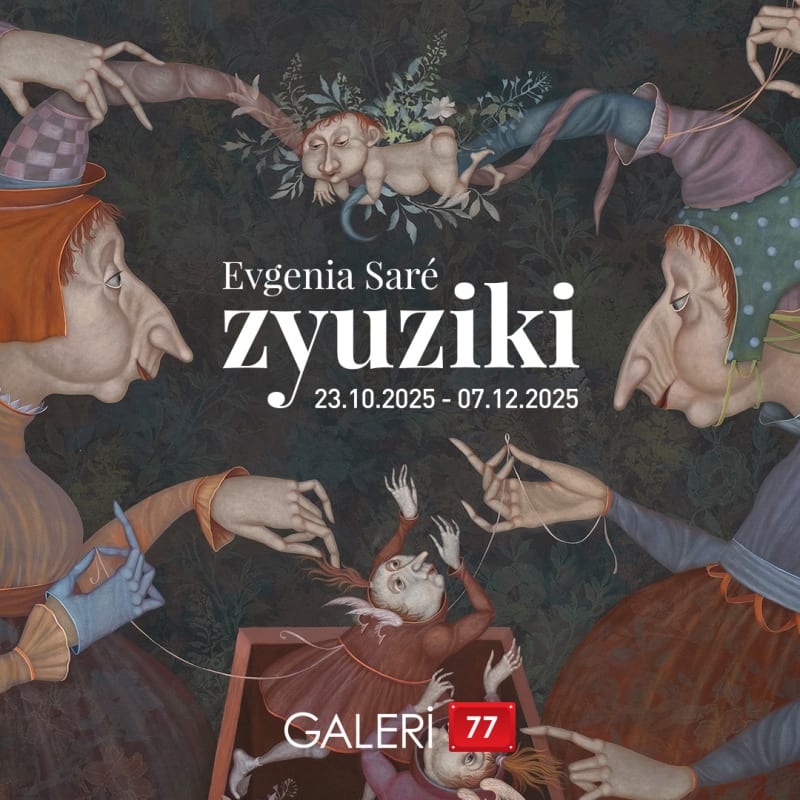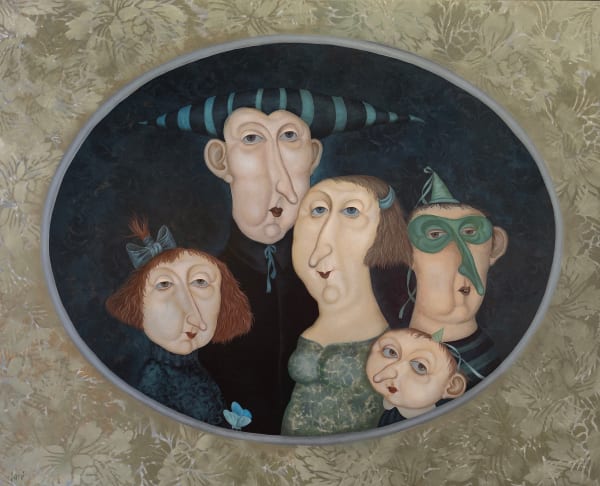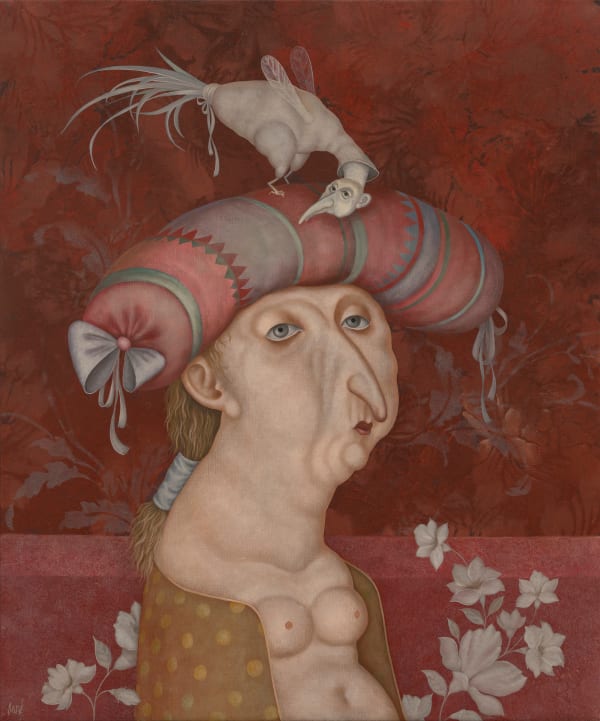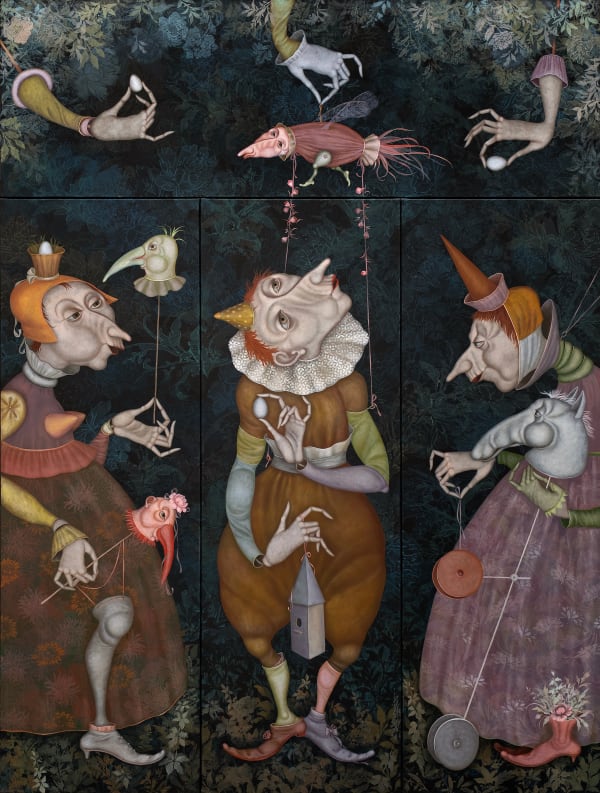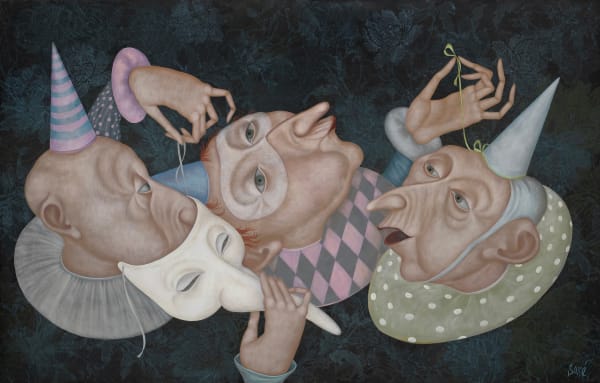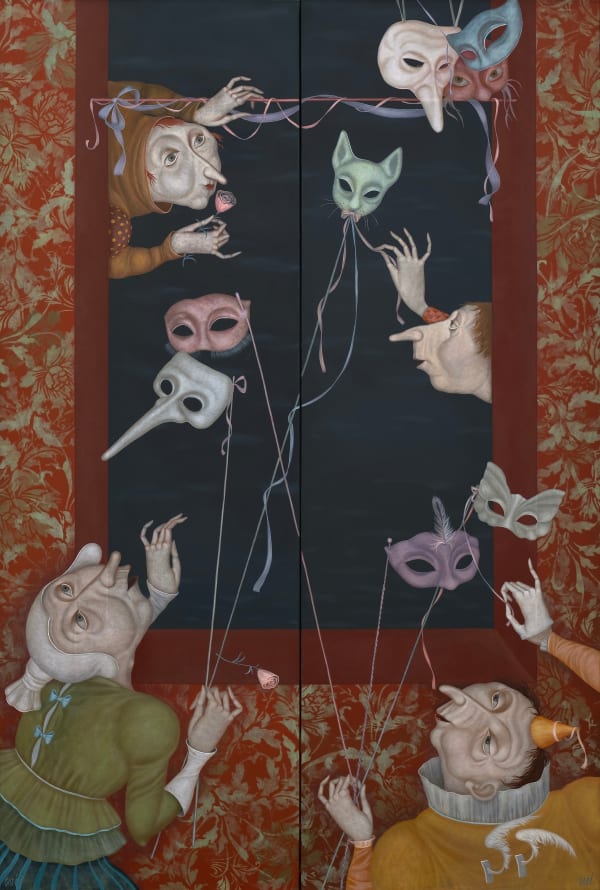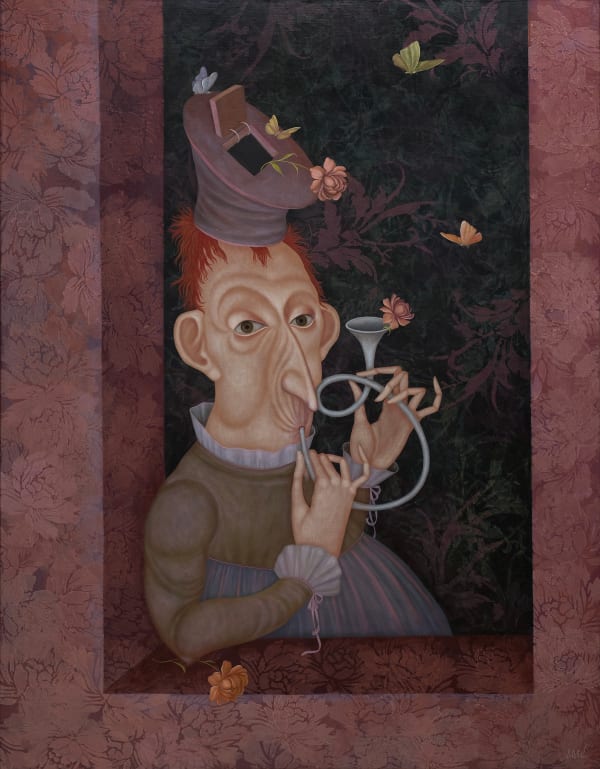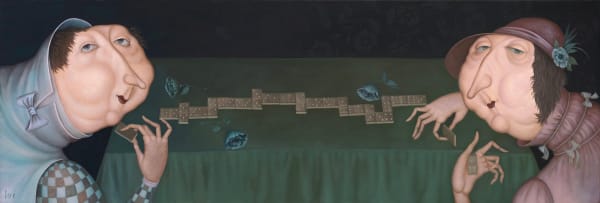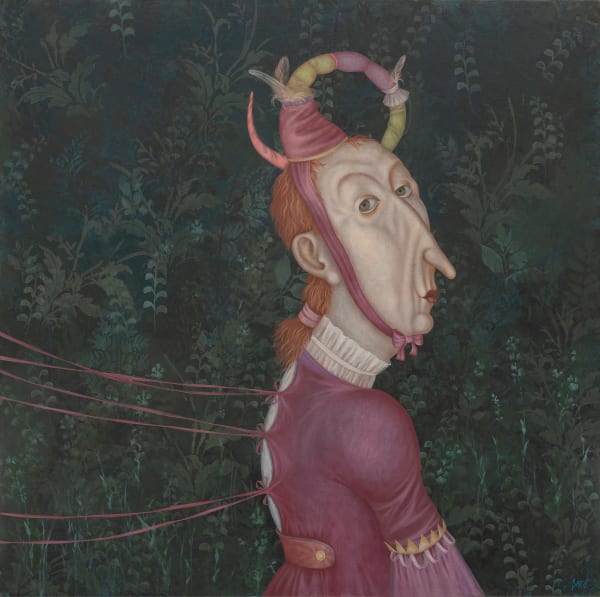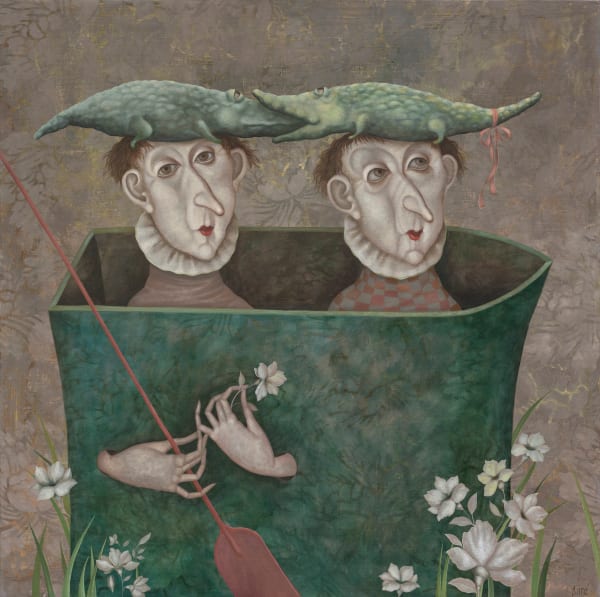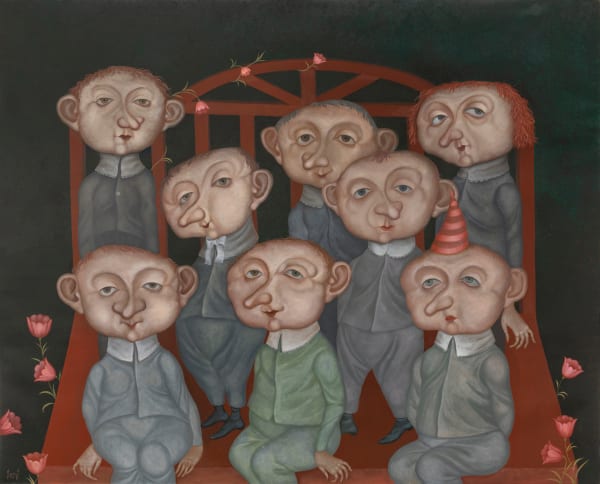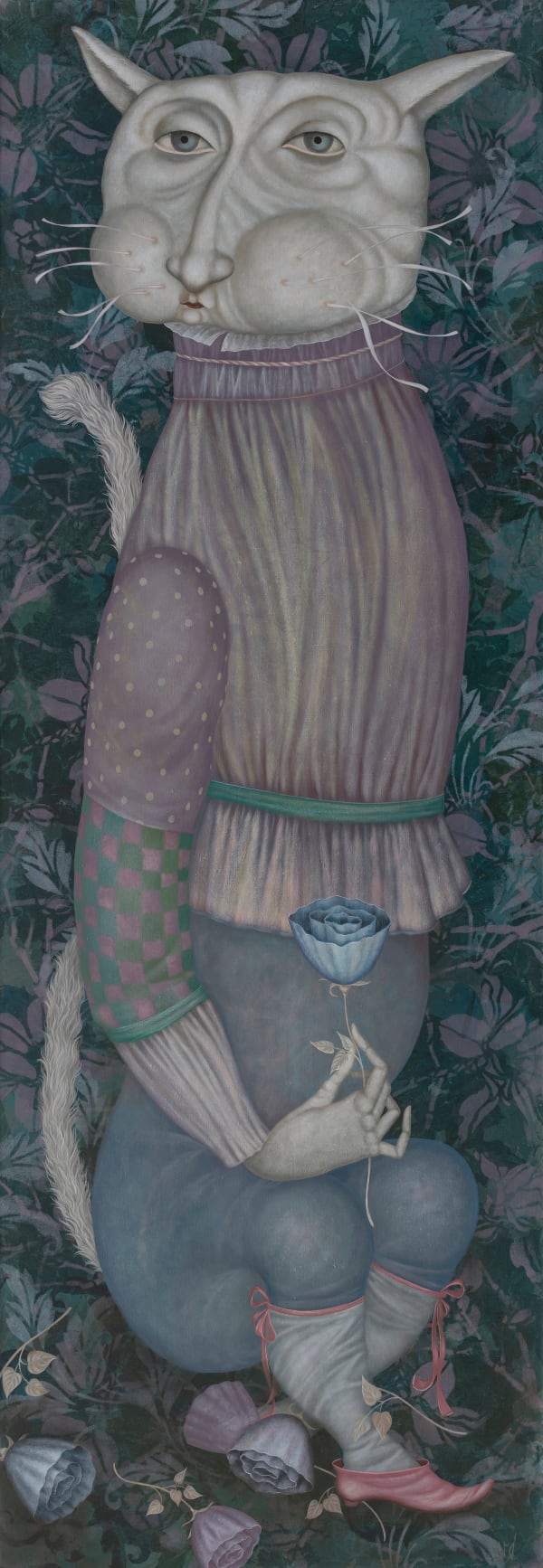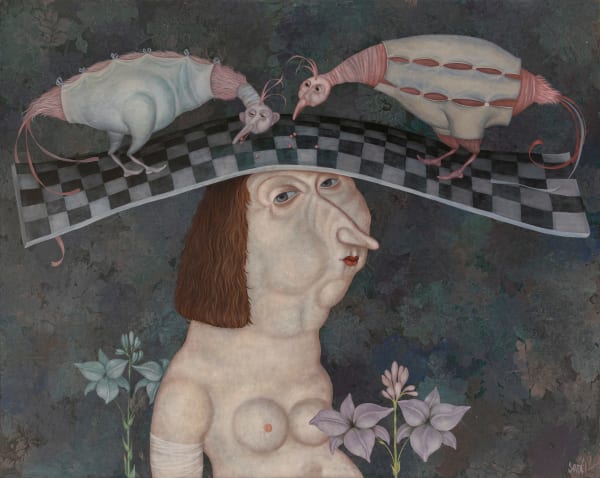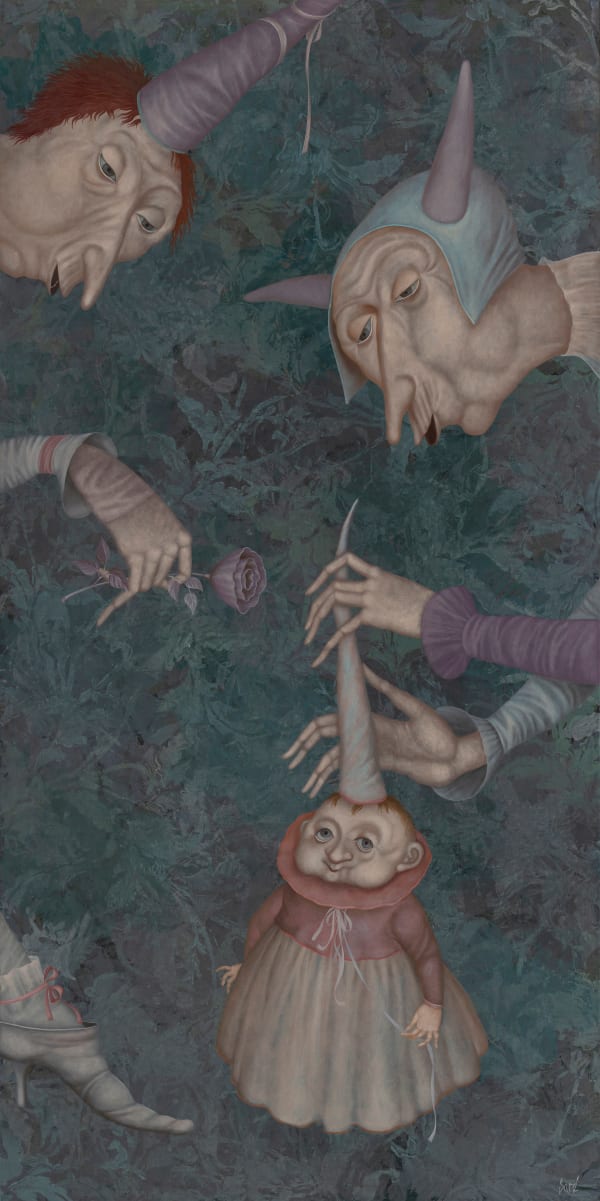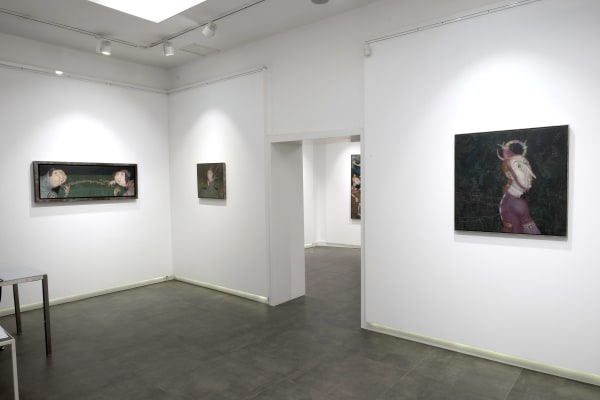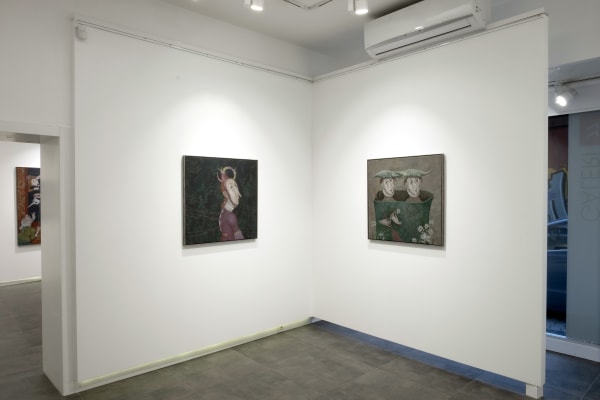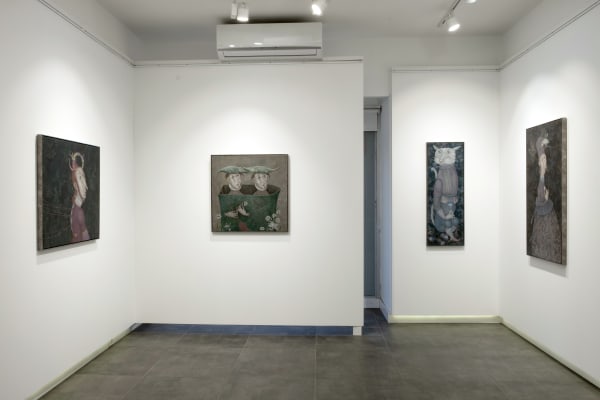Zyuziki: Evgenia Sare
Past exhibition
Overview
Evgenia Saré is an Armenian-born, Paris-based painter; she has been living and producing her works in Paris since 1991. The atmosphere, characters, costumes, and colors she creates in her paintings often give the impression of being prepared like a stage. The geometry of the arrangements on the canvas, the use of empty spaces, and the costumes establish a plane where the figures can step onto the stage, hold their poses, and remain legible. She emphasizes to the viewer that these spaces function like emptied-out, theatrical, and slightly uncanny stage sets, thereby bringing faces and bodies to the forefront.
In these constructed scenes, the Zyuziki appear: Saré’s recurring cast of players, the figures who are the subjects of her paintings. With round physiognomies that sometimes falter, these strange yet affectionate beings return to the canvases like a large family encountered in different scenes. The artist describes them as a “tremendous family” with human values and measures that are different from ours yet still recognizable; thus, even as a parallel community is formed, the viewer often has the chance to see something of themselves. The Zyuzikis form pairs and small groups, carrying unexpected hats, accessories, animals, or costume-like elements, behaving according to their own customs; their tone is not cruel but grotesque-joyful, allowing satire to suddenly merges into compassion.
Due to the technique she employs, Saré works in a slow and classical manner. She has moved between engraving/etching on Plexiglas, monotype, and oil painting; often constructing a surface by layering and adding transparent varnishes (glazes) over a delicate drawing, a process that requires drying time. In her works on paper, refined pastel tones and transparent washes “humanize” the grotesque; in oil painting, thousands of small brushstrokes can create the effect of a polished skin that captures the light. Saré’s statement that she deliberately chooses the 15th–16th century technique, which “allows time for reflection and does not accept haste,” also signals a stance against today’s reactive image culture.
What the Zyuzikis do is both modest and meaningful. Suspended in a pose as if in play, they construct a culture through rediscovery: recalling and experimenting with gestures, codes, and small rituals (how to dress, how to greet, how to stand side by side) until they settle into place. Their actions are essentially pure, without coercion or imposition. At once playful and serious, they carry qualities we label “male/female” or “adult/child,” but belong fully to none. In these scenes, costumes turn into temporary customs, gatherings into micro-communities, and attention into a practice of care. Thus, we witness the reconstruction of a culture through these small recoveries.
From the perspective of art history, Saré’s works draw inspiration from the grotesque and carnivalesque European tradition, stretching from Bosch and Bruegel to Callot, Daumier, and even Goya; but she uses this legacy not to deride, but to humanize. Her “grotesque realism” pierces through empty ideals of beauty, allowing forms to arrive swollen, crooked, and knotted, and then revealing beauty within the logic of that very existence.
Ultimately, Saré’s proposal is not a “light” fantasy, but a serious discipline of play. She sets the stage, welcomes the viewer inside with rules, costumes, and intervals; her figures appear not as objects of ridicule but as familiar presences carried with human dignity. The credibility of this play settles onto the surface thanks to the artist’s classical, multilayered oil technique and patience; the “polished” skin effect from thousands of tiny brushstrokes makes slowness itself become content. The world we see is timeless, in a theatrical scene where place is unimportant and staging can be constructed anywhere and at any moment. In the end, the decision belongs to the viewer: Saré sets the “rules of the game,” but the silent, serious-humorous faces on stage leave both the smile and the judgment to us. Thus, the Zyuzikis’ small gestures, costumes, and postures evolve into a new language of being-together; the grotesque is refined, humanized with compassion; and the attention within the scene becomes a practice that can seep out into everyday life.
Works
-
 Evgenia Saré, İkili / Duo, 2019
Evgenia Saré, İkili / Duo, 2019 -
 Evgenia Saré, Aile Portresi / Portrait de Famille (Family Portrait), 2019
Evgenia Saré, Aile Portresi / Portrait de Famille (Family Portrait), 2019 -
 Evgenia Saré, Maskeler / Masques (Masks), 2016
Evgenia Saré, Maskeler / Masques (Masks), 2016 -
 Evgenia Saré, Kelebek Yürüyüşü / Promenade du Papillon (Butterfly Walk), 2020
Evgenia Saré, Kelebek Yürüyüşü / Promenade du Papillon (Butterfly Walk), 2020
-
 Evgenia Saré, Yastık / Mutaka (Pillow), 2018
Evgenia Saré, Yastık / Mutaka (Pillow), 2018 -
 Evgenia Saré, Gece / Nuit (Night), 2023
Evgenia Saré, Gece / Nuit (Night), 2023 -
 Evgenia Saré, Kuklalar / Marionnettes (Puppets), 2023
Evgenia Saré, Kuklalar / Marionnettes (Puppets), 2023 -
 Evgenia Saré, Maskeler Aşağı / Bas les Masques (Down with the Masks), 2024
Evgenia Saré, Maskeler Aşağı / Bas les Masques (Down with the Masks), 2024
-
 Evgenia Saré, Maskeler / Masques (Masks), 2021
Evgenia Saré, Maskeler / Masques (Masks), 2021 -
 Evgenia Saré, Yaz Melodisi / Mélodie d'été (Summer Melody), 2023
Evgenia Saré, Yaz Melodisi / Mélodie d'été (Summer Melody), 2023 -
 Evgenia Saré, Domino, 2019
Evgenia Saré, Domino, 2019 -
 Evgenia Saré, Gece / Nuit (Night), 2017
Evgenia Saré, Gece / Nuit (Night), 2017
Installation Views
